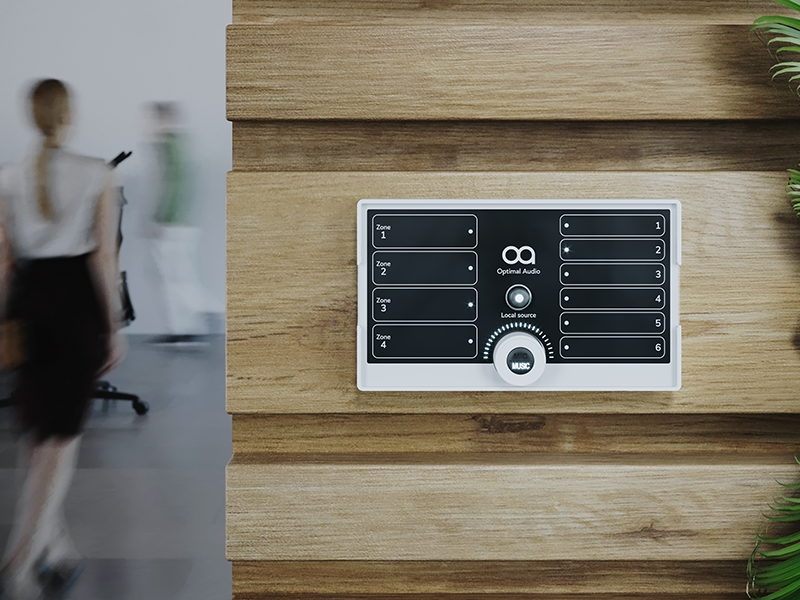In UK workplaces, design often focuses on visible elements—ergonomic furniture, lighting schemes, and open layouts. However, an unseen yet equally critical factor in productivity and employee well-being is sound. Carefully implemented commercial audio speakers can transform an office environment, fostering focus, enhancing collaboration, and elevating overall morale.
Picture a bustling Manchester office where thoughtfully placed acoustic solutions minimize noise disruptions, creating a harmonious backdrop for productive work. Alternatively, imagine a quiet room in a London consultancy equipped with ambient audio to ease concentration without the discomfort of total silence. These examples highlight how strategic sound design creates tailored environments that align with the needs of modern workplaces.
Soundscapes for Productivity
The challenge in many offices isn’t merely reducing noise—it’s leveraging sound to improve functionality. Take, for instance, an Edinburgh office that uses dynamic soundscapes throughout the day. Morning tunes might be light and uplifting to set a positive tone, shifting to energizing beats during peak productivity hours. By late afternoon, calming melodies help maintain focus and stave off fatigue. These thoughtful adjustments enable employees to remain engaged, even as energy levels fluctuate. Soundscapes can also mask distracting background noise, creating an environment more conducive to deep work. Moreover, they contribute to a sense of cohesion, subtly reinforcing the office culture and shared rhythm of the day. Such strategic use of sound demonstrates how audio design can be a powerful tool in shaping workplace dynamics.
Managing Acoustic Challenges
UK offices often feature open-plan layouts designed to encourage communication, yet these spaces can quickly become noisy and chaotic without proper management. The solution lies in a sound system tailored to the layout’s demands. For example, in collaborative zones, systems that subtly adjust volume based on activity levels can balance interaction without disrupting quieter areas. Strategically placed commercial audio speakers ensure that sound enhances the workspace instead of overwhelming it.
Prioritizing Employee Well-Being
Sound plays a pivotal role in shaping employee well-being. Consider a Birmingham office that integrates sound masking technologies, introducing consistent background noise to mask disruptive sounds like ringing phones or loud conversations. This approach reduces stress and fosters a peaceful atmosphere, allowing employees to focus comfortably. Over time, these enhancements lead to improved job satisfaction and mental health, contributing to a healthier workplace culture.
Adapting to Hybrid Work Models
As UK businesses embrace hybrid work models, flexibility becomes crucial in sound system design. Offices now cater to fluctuating employee presence, requiring adaptable audio solutions. Commercial audio speakers that seamlessly adjust to suit smaller or larger groups enable businesses to maintain functionality regardless of attendance. Whether hosting virtual meetings or concentrating on detailed tasks, these systems provide the versatility needed in today’s dynamic workplaces.
Seamless Integration with Design
Functionality isn’t the only consideration—audio systems should also complement office aesthetics. In London’s sleek financial district, for example, technology that blends discreetly into the workspace maintains the office’s professional appeal. High-performance commercial audio speakers can deliver excellent sound quality while harmonizing with the décor, ensuring they enhance rather than detract from the overall design.
Investing in Sound for Success
Sound significantly impacts both productivity and well-being, yet its potential is often overlooked. In diverse UK workplaces, a tailored approach to sound makes all the difference. Businesses that incorporate thoughtful audio strategies—whether through sound masking, dynamic systems for hybrid working, or seamless aesthetic integration—are not just investing in infrastructure but in their most valuable asset: their people.
By creating an environment where sound supports concentration, collaboration, and comfort, companies position themselves for long-term success, ensuring their employees are empowered to perform at their best. Sound is no longer a mere backdrop; it’s a cornerstone of the modern workplace experience.
